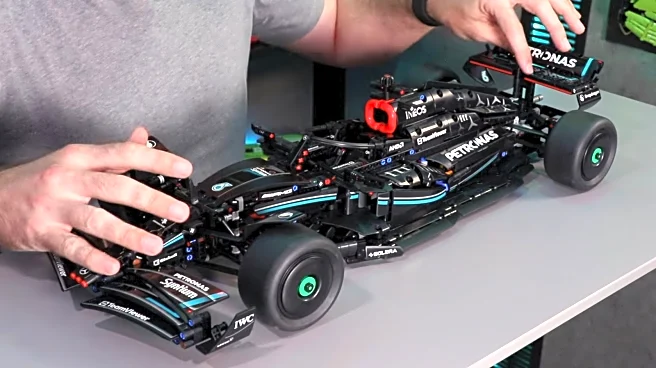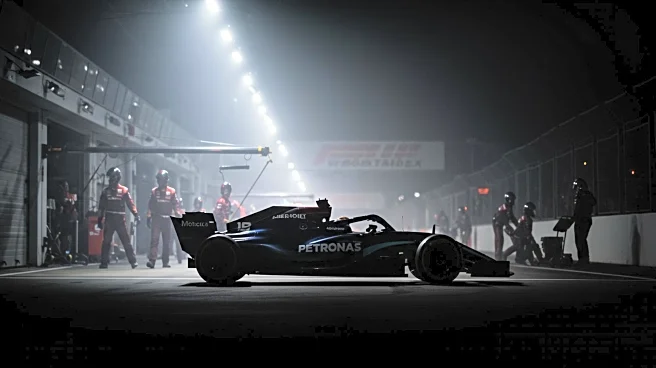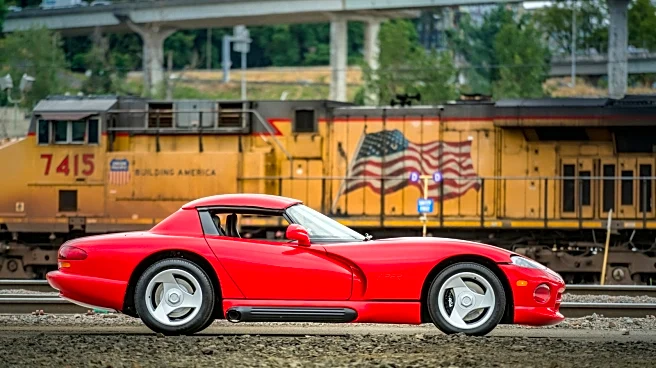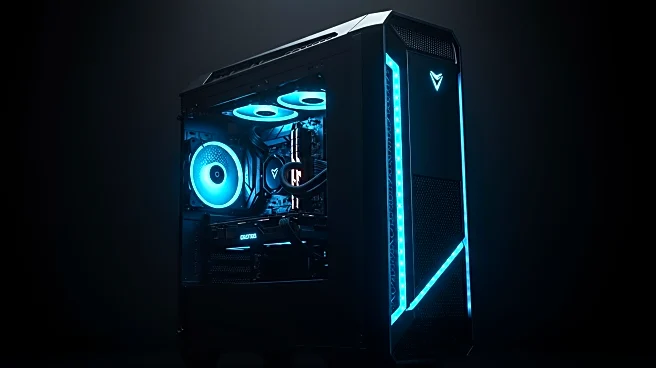
Hello, fellow adults! May I interest you in an interlocking brick system designed to mimic your favorite racing automobile? Yes, this is about Lego Technic F1 sets, which you might (incorrectly) think are child's toys. The website clearly states they are for ages 18+. Lest you think I'm being snarky, not only have I built my share of Lego car sets, but I was also enthralled when this very site discussed Lego demonstrating how CVT gearboxes work. I was also nerdy enough to design an overhead valve
setup for my 1994 8880 Lego Technic Super Car's engine, so covering the details of modern F1 Technic sets is pure, distilled joy.
The sets these days are fantastically detailed, and the best part is, Lego doesn't just make the models look like race cars, there are a shocking number of engineering details, too. There's the obvious stuff, such as reciprocating pistons in the V6 engine, but that's an iceberg tip. Gone are the blocky, crude designs of the '70s and '80s Lego sets, which looked like F1 cars rendered by a Commodore 64. In the 1990s, Lego started embracing more realistic designs, especially with the Ferrari Formula 1 Racing Car in 1998. This kit was a big leap forward with actual Ferrari and Shell logos, not to mention working steering.
As the 2000s marched along, these sets started to incorporate more bespoke pieces to capture the swoops and angles of the real race cars, such as the 2004 Ferrari F1 Racer that appeared when Michael Schumacher was dominating the series. Current Lego Technic F1 sets are the most accurate yet. These detailed models are really meant for display, but if you want to play with them like you're a kid on the outside and the inside, Lego will reward you for it.
Read more: Every 2025 Formula 1 Livery, Ranked From Worst To Best
Gears, Springs, And Wings, Oh My!

Right now, Lego offers four Technic F1 cars for $229.99 each: the Oracle Red Bull Racing RB20, the Ferrari SF-24, the Mercedes-AMG W14 E Performance, and the McLaren Formula 1 car. There's also a smaller, cheaper pull-back Mercedes-AMG model and a McLaren Formula E car, too. And the details, from appearance to function, are extraordinary.
It's not enough to just have springs to let the suspension rebound; the suspension also has to act like the real thing. F1 suspension is quite complex and is designed to optimize aerodynamics and weight distribution for optimal speed and handling. Anything that doesn't have to be exposed is concealed by the car's bodywork, so springs and dampers are inboard. To satisfy F1 fans and car tech nerds, Lego has replicated the suspension as closely as plastic brickery will allow. To see the movement of the suspension in the Lego Technic Mercedes-AMG F1 model complete with push and pull rods, Josh Builds Stuff demonstrates with excellent camera work. The Lego car uses coil springs while modern F1 cars use torsion bars, but it's still dang close, and torsion bars would be tough to make out of plastic, anyway.
Moving on to the engine, of course, there are moving pistons, but checking out RacingBrick's build of the Lego Technic Oracle Red Bull Racing RB20 F1 car shows that Lego includes a shiftable 2-speed transmission and a little model MGU-H unit that's driven by a cog from the gearbox. While it's not the eight speeds in a real F1 gearbox or the five-speed dogleg transmission Lego designed for the 8448 Super Street Sensation supercar in 1999, this is another area where we can give Lego some slack. There didn't have to be a transmission at all, but it's included anyway.
Red Bull Gives You Wings (So Do Ferrari, Mercedes, McLaren, And Other F1 Cars)

Looking at Brick Quest's analysis of the Lego Red Bull RB20 and Ferrari SF-24 models, you can see that the company created bespoke aerodynamic bits to help the cars take shape. Alex Nunes helpfully sits the 2005 Lego Technic Ferrari F1 model next to the 2025 version, and the detail differences are stark. The '05 model has wings constructed from stock Lego pieces, inaccurate wheels, and an overall feeling of being more spindly. The '25 model on the other hand, has beautifully shaped wings, replica wheel covers, and P-Zero branded slicks, and it is less skeletal because Lego has absolutely figured out how to capture the essence of real cars. Lego even included an approximation of an F1 DRS system with an adjustable rear wing.
Sponsorships are big money for F1, so it's no surprise that corporate stickers are everywhere on Lego Technic F1 models. Brands like HP, Ray-Ban, Visa, and Zoom spend millions of dollars to have logos slapped on Formula 1 racers, and you'd better believe they're going to want their names on the scaled down home versions, too. Looking at the official 2022 McLaren F1 Lego Technic instructions, which, at 320 pages, are longer than J.R.R. Tolkien's "The Hobbit," it appears the sponsorship graphics are just stickers. So, if your favorite team loses a sponsor, tear off the sticker from your model for added realism.
Lego is an unbelievable medium. Henry Lim built a working Lego harpsichord. Lego itself built a life-size driveable Bugatti Chiron. I made my wife a Lego bunny that poops Hershey's Kisses for Easter. Your imagination and good taste are the only limits.
Want more like this? Join the Jalopnik newsletter to get the latest auto news sent straight to your inbox...
Read the original article on Jalopnik.














